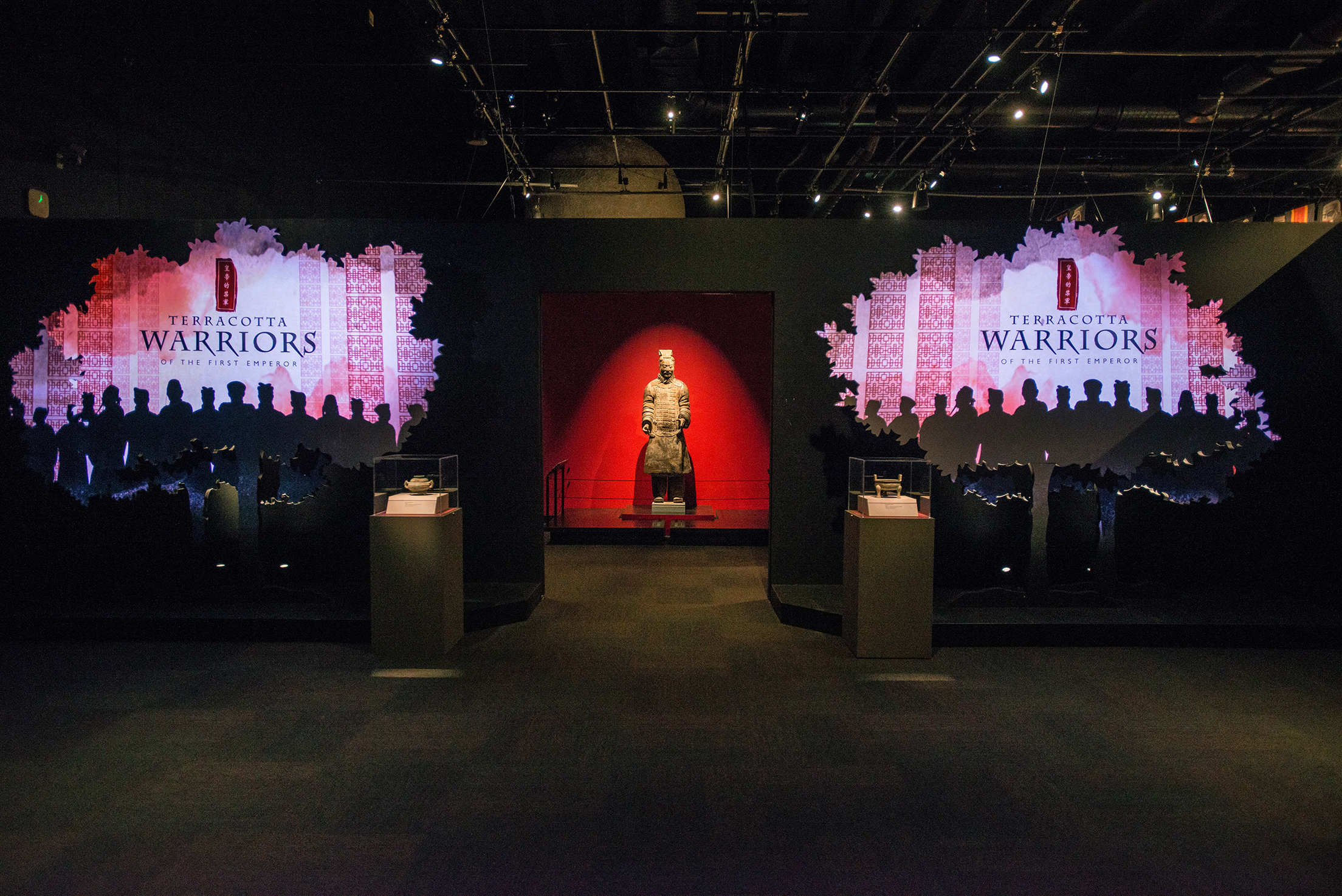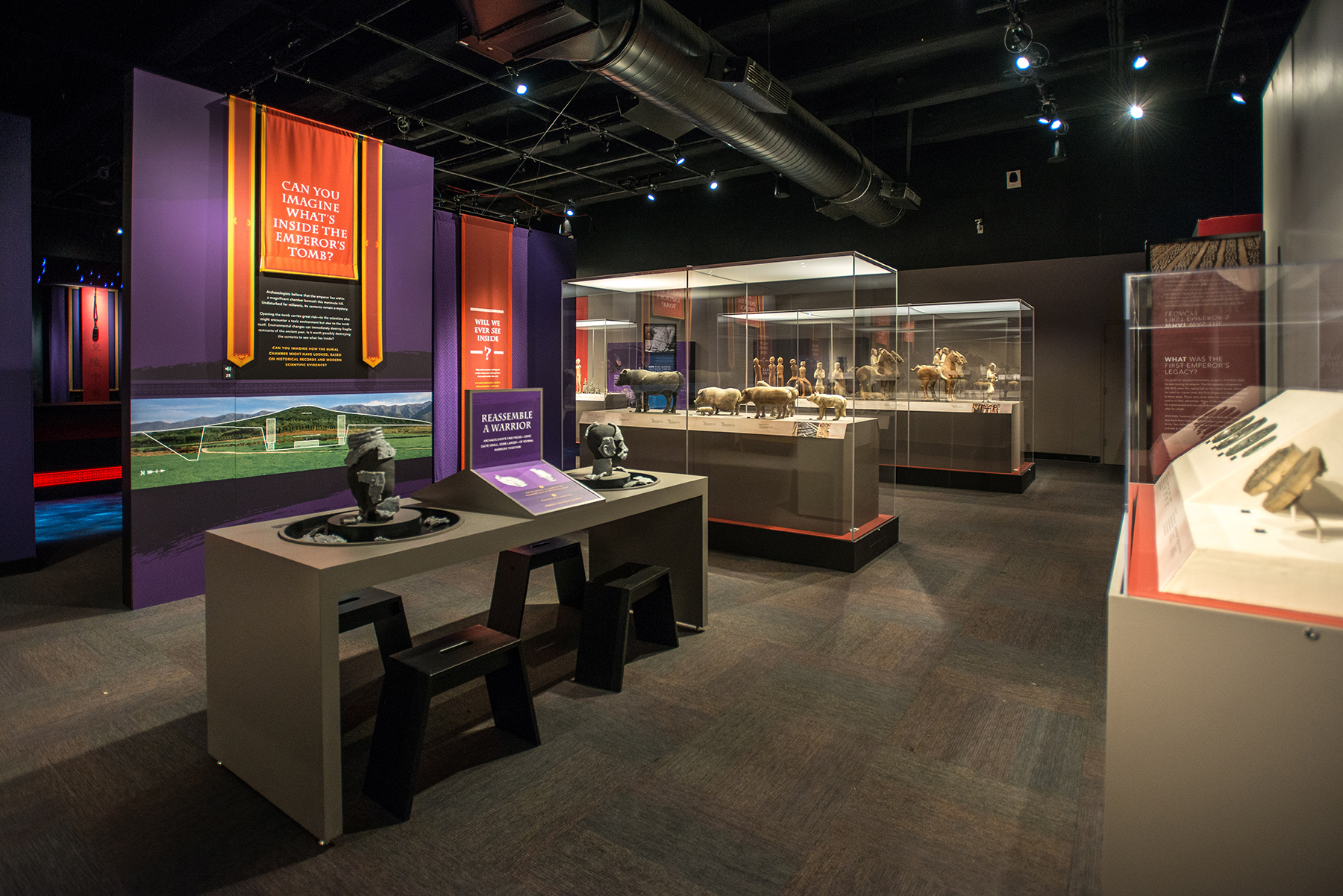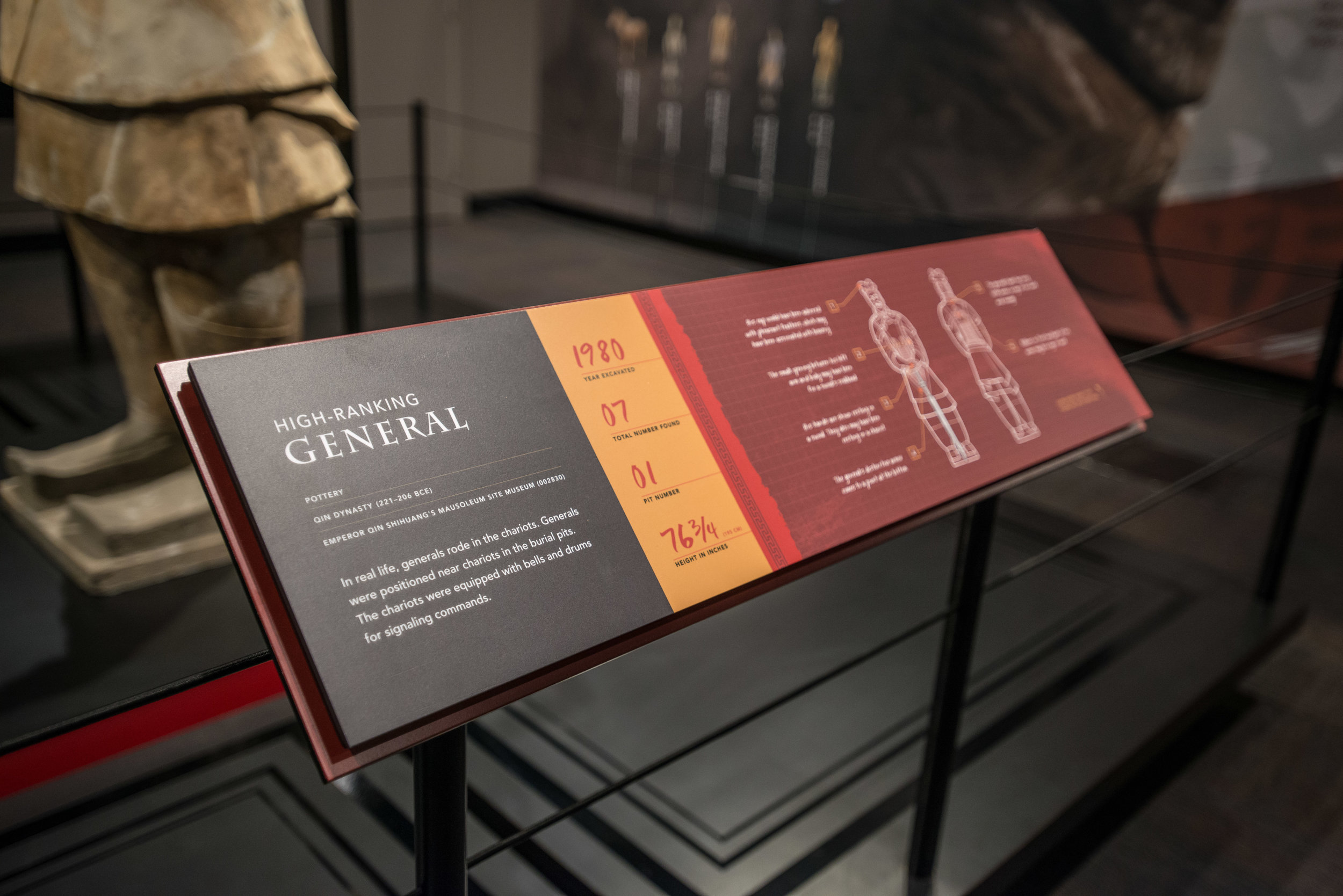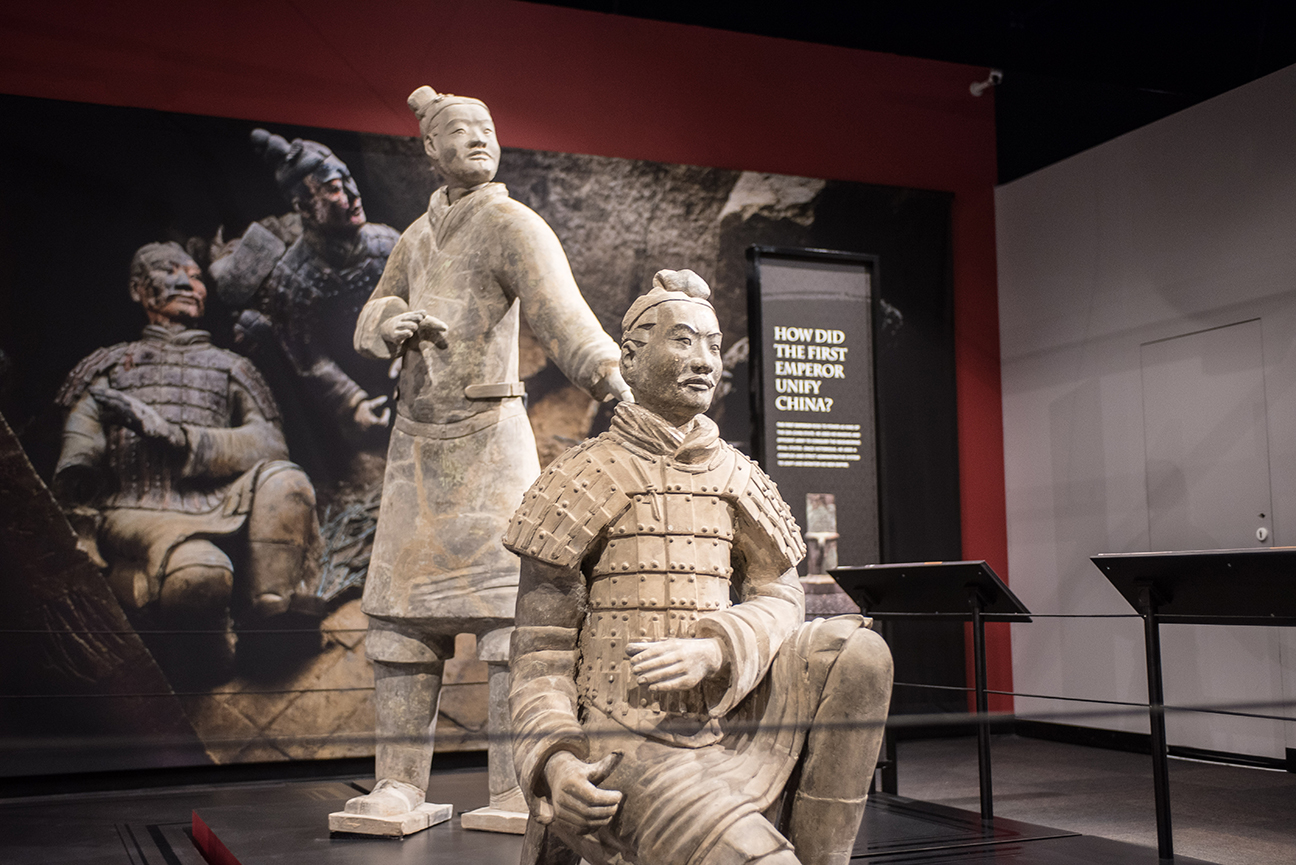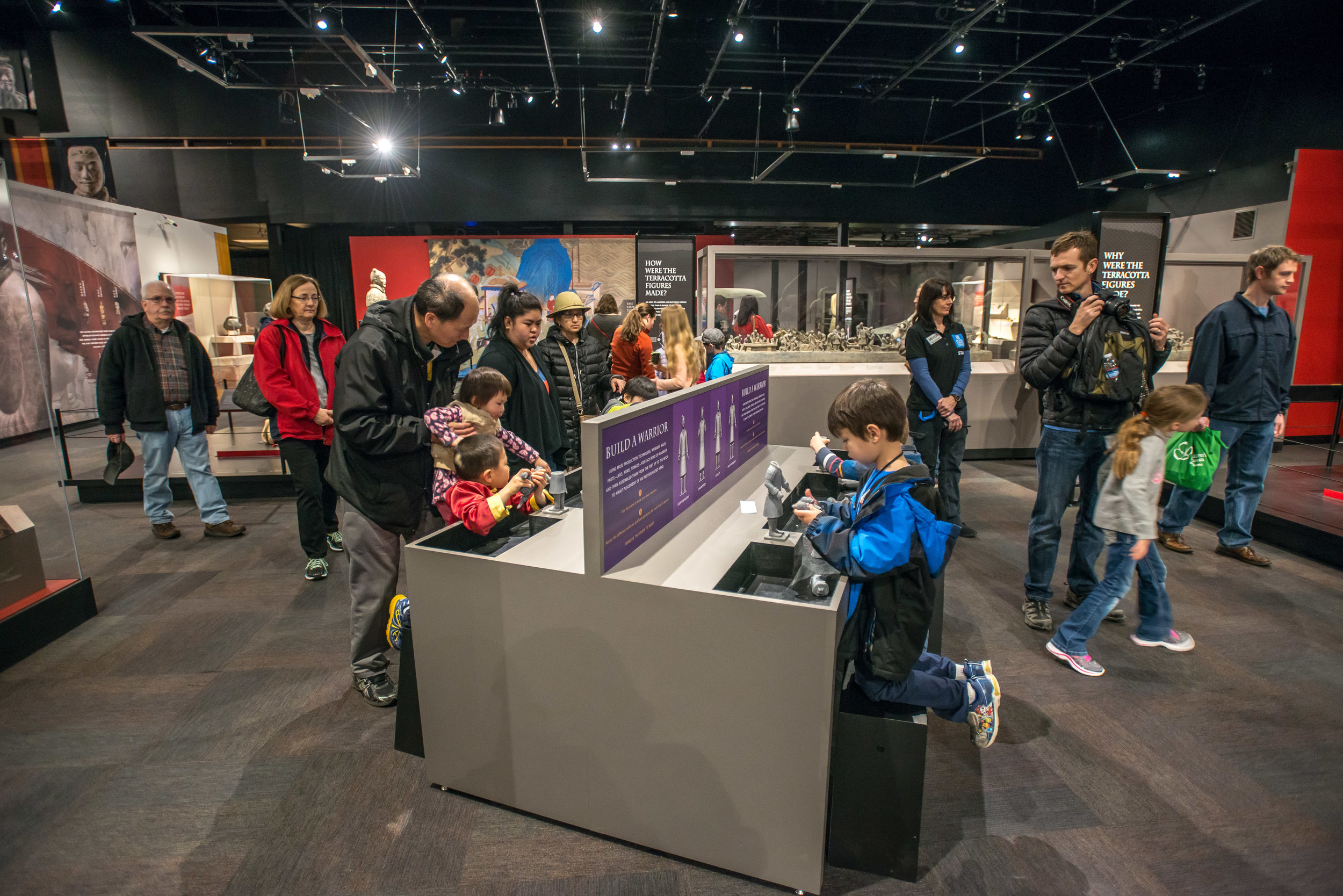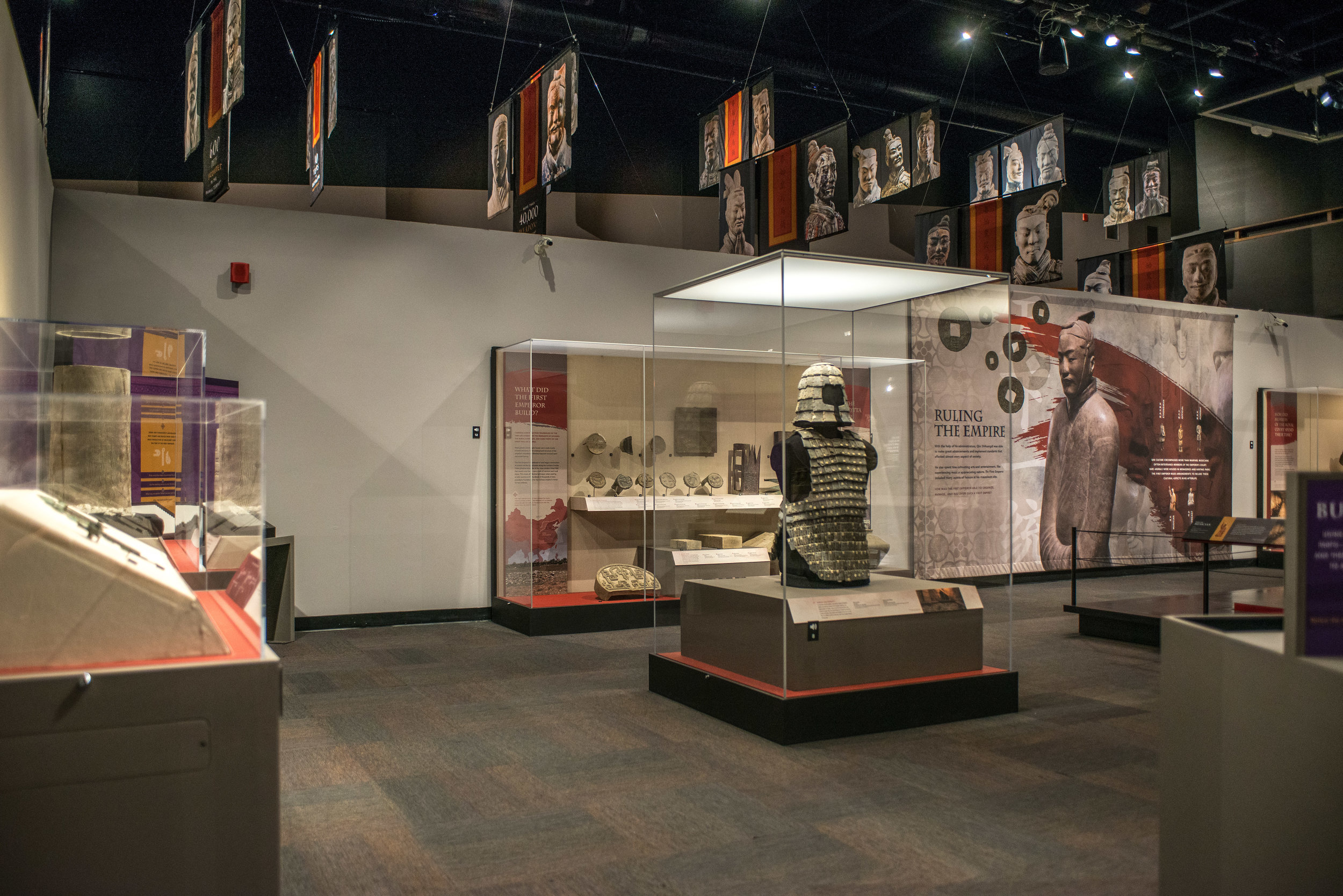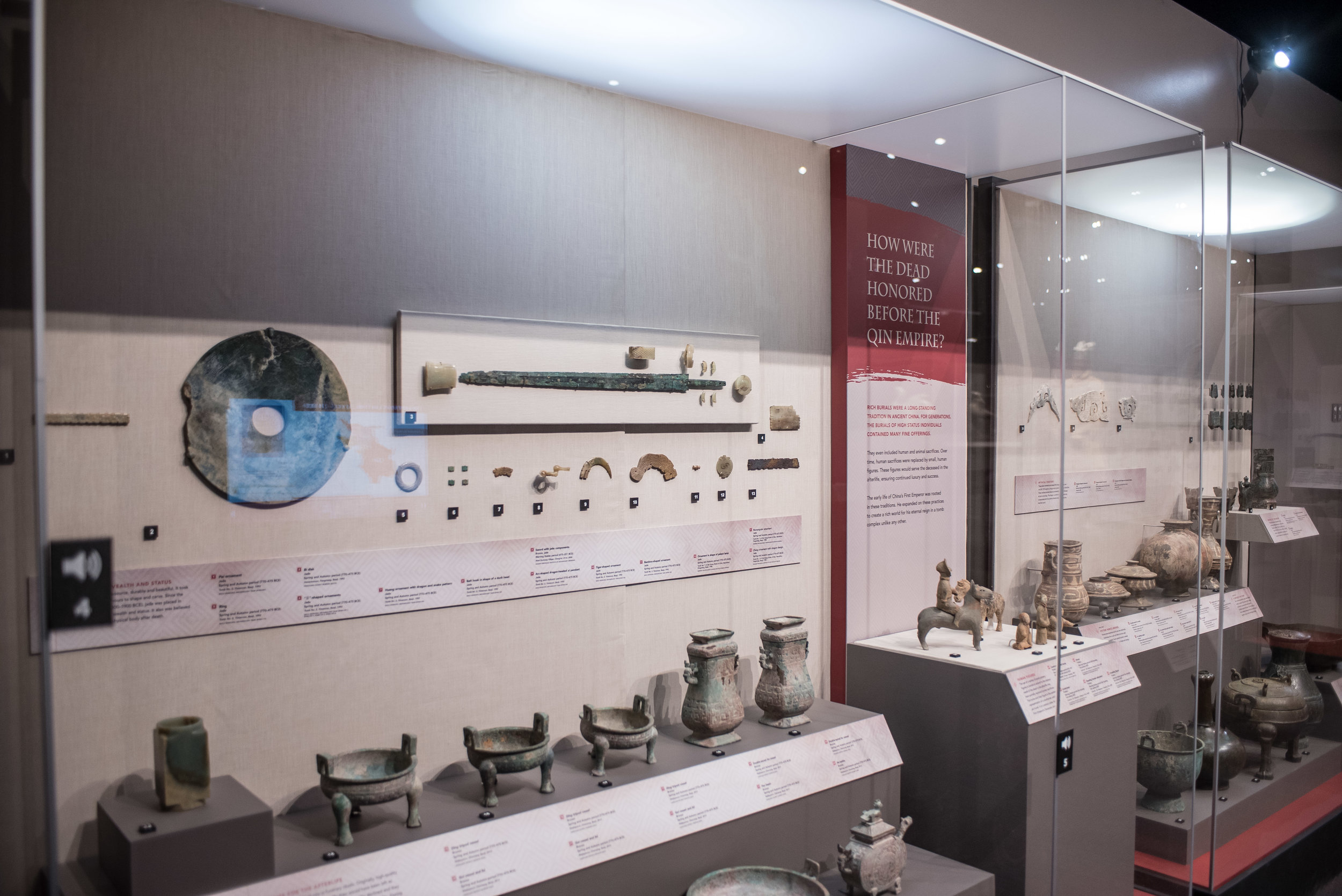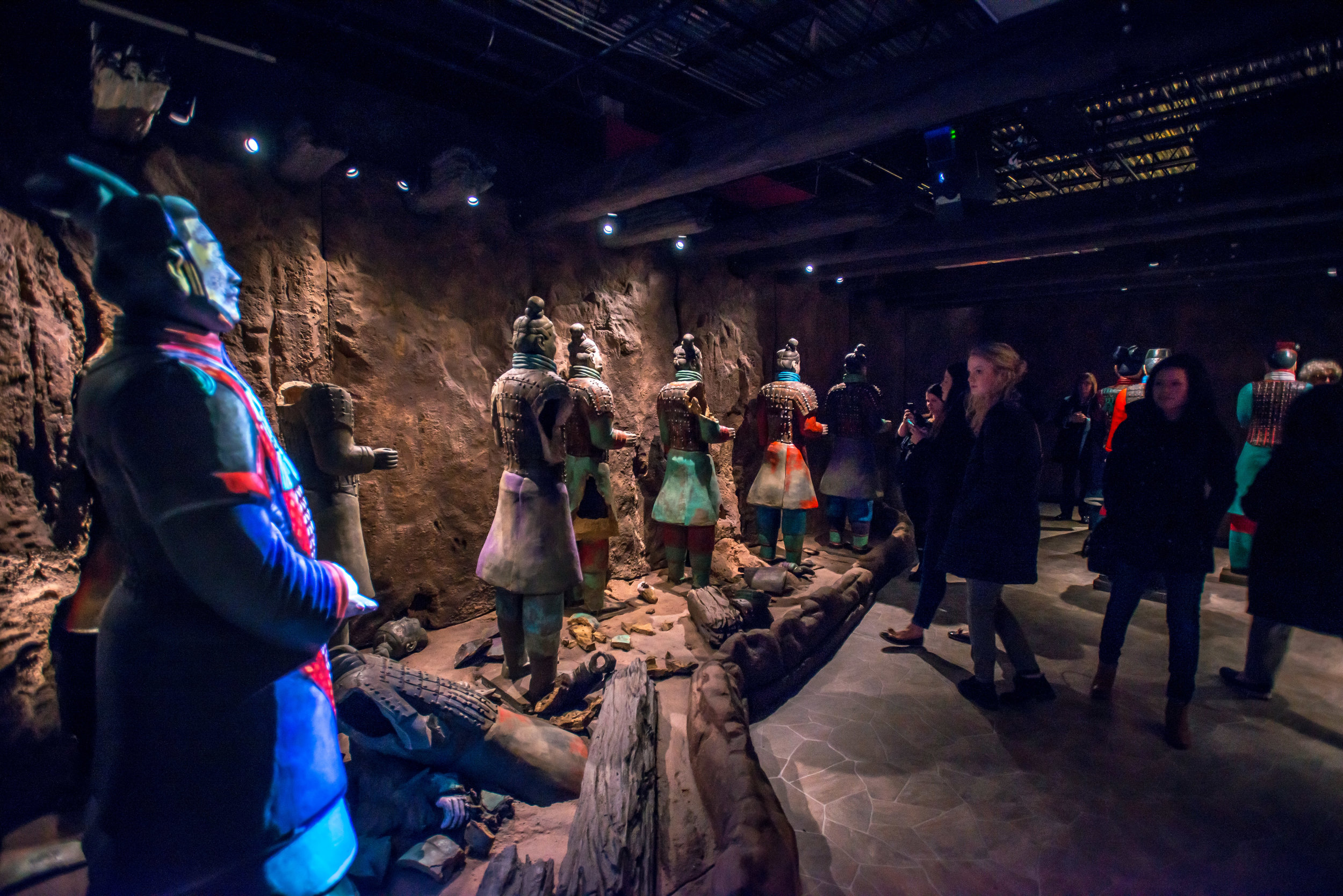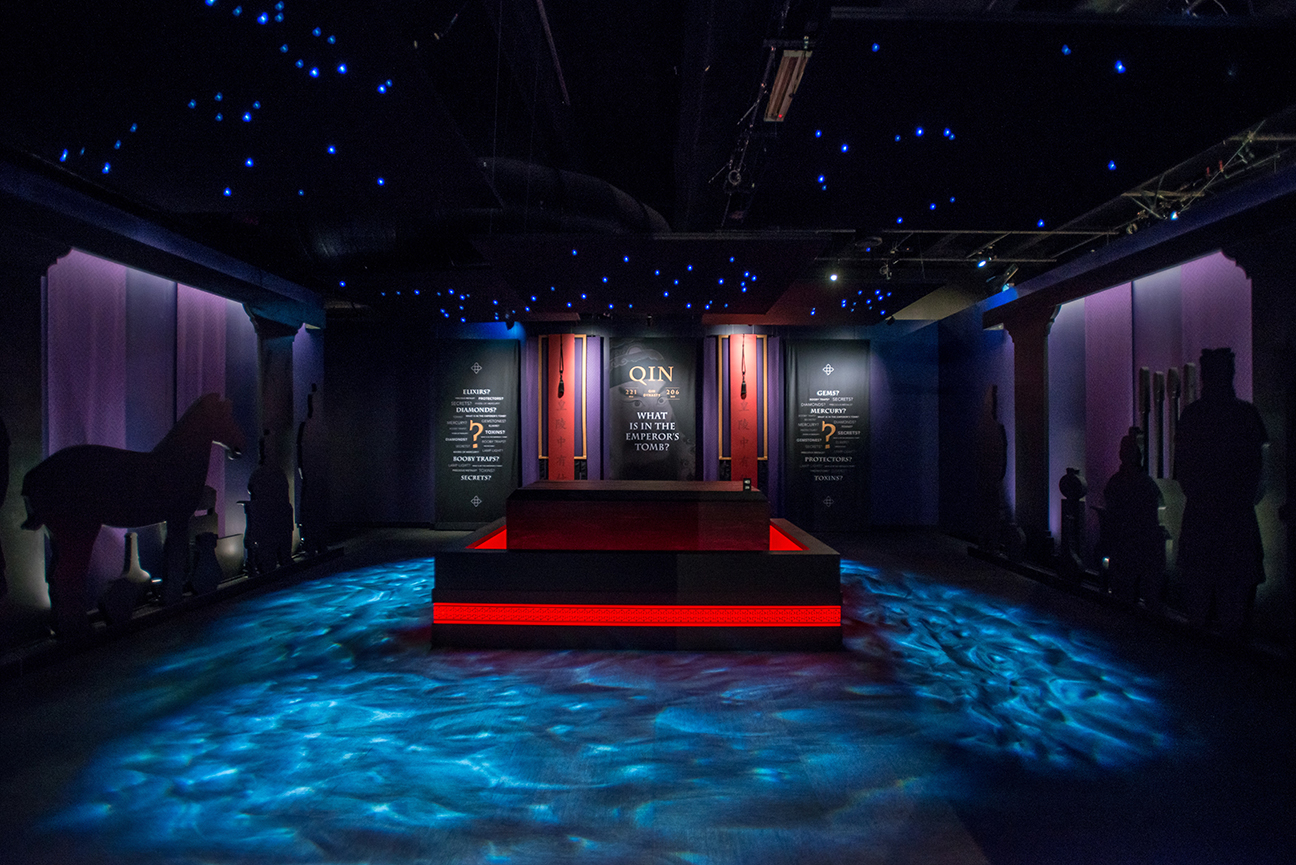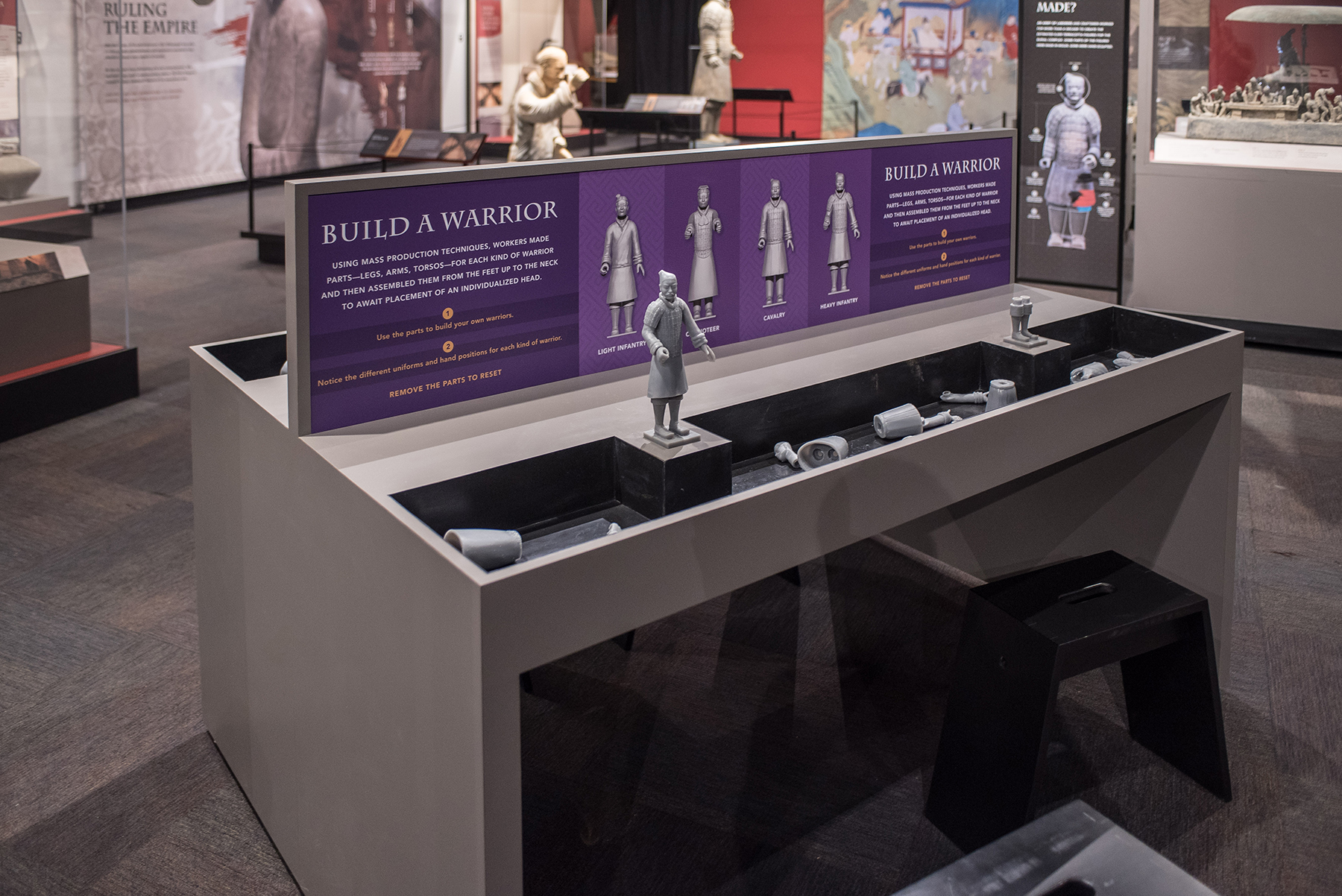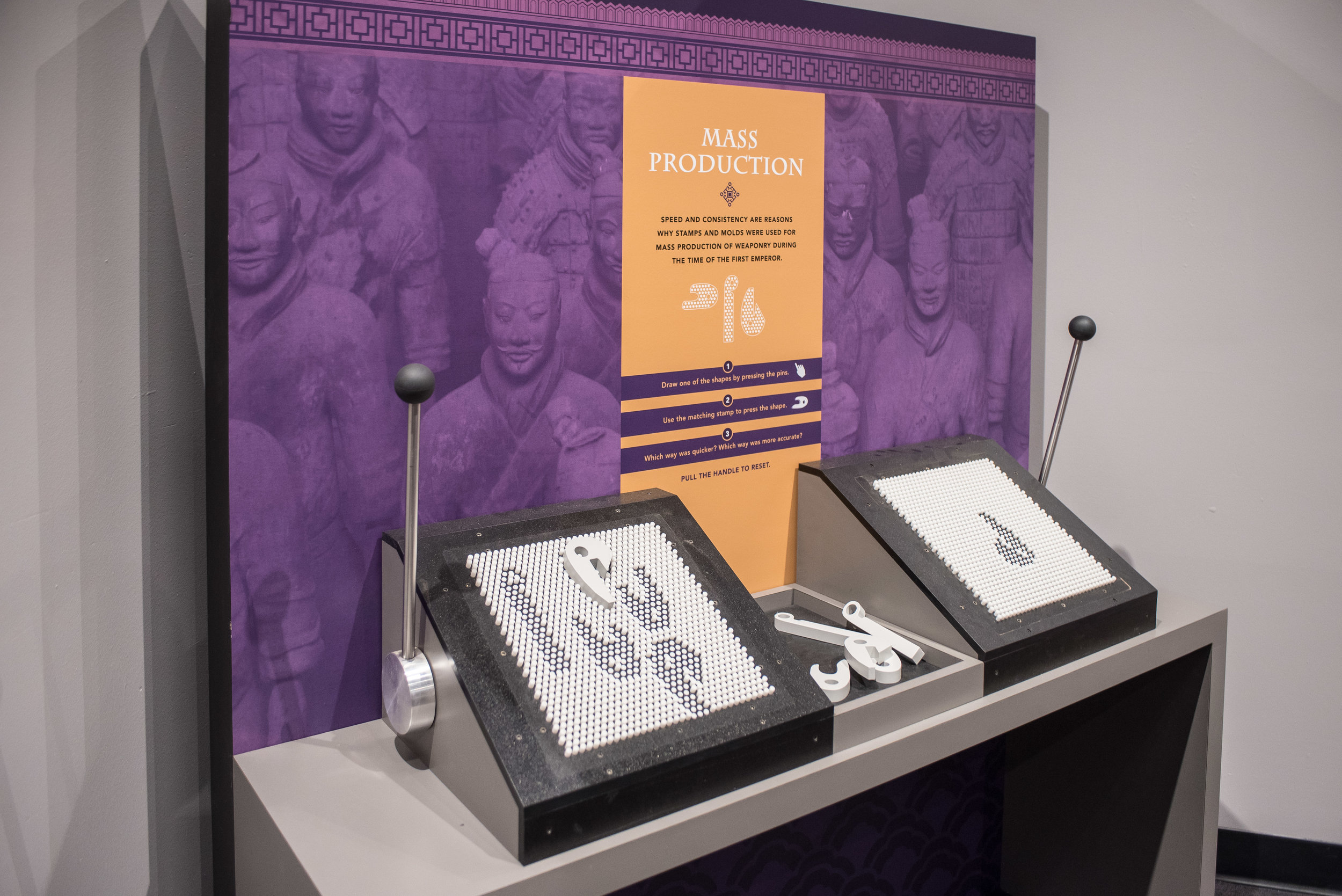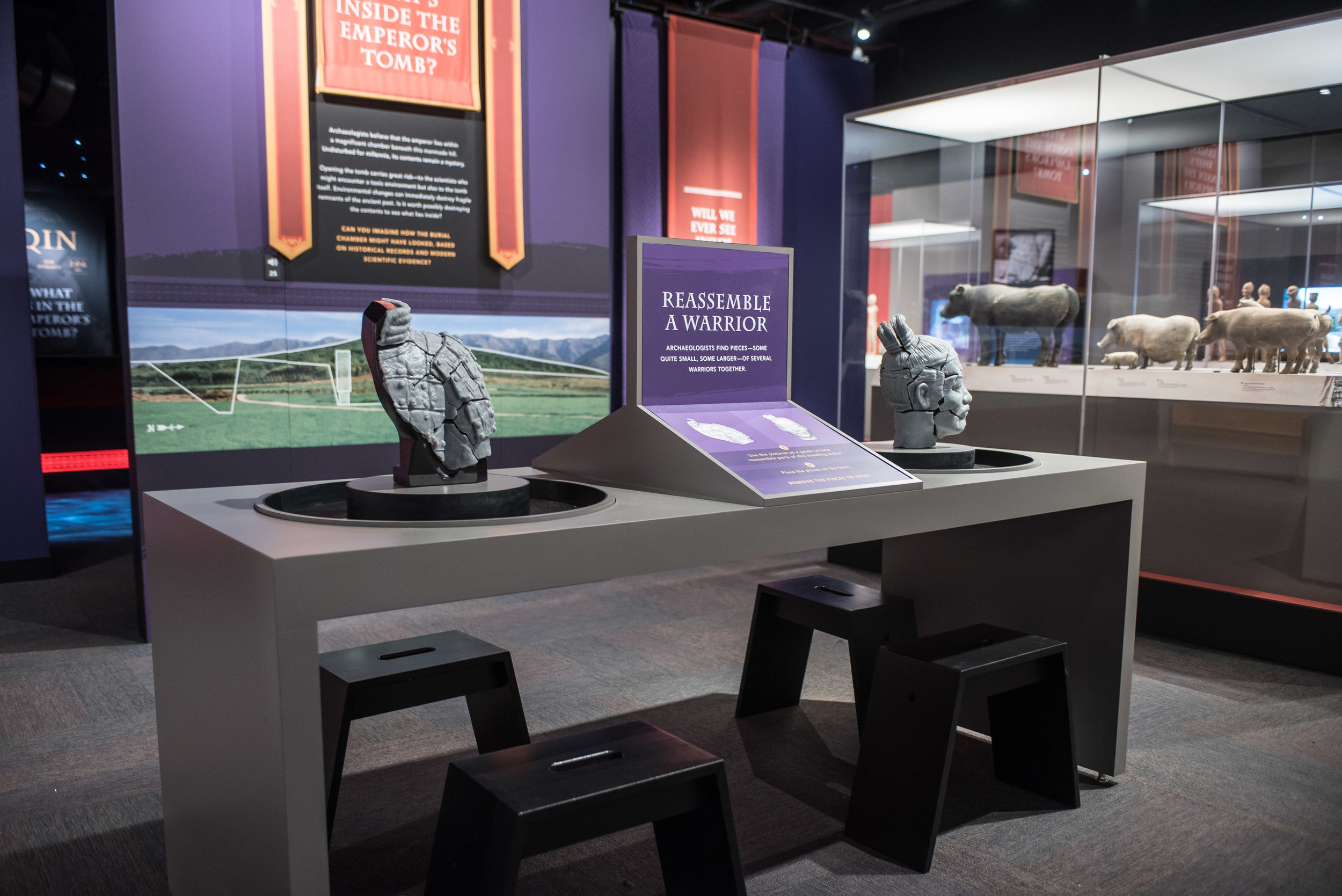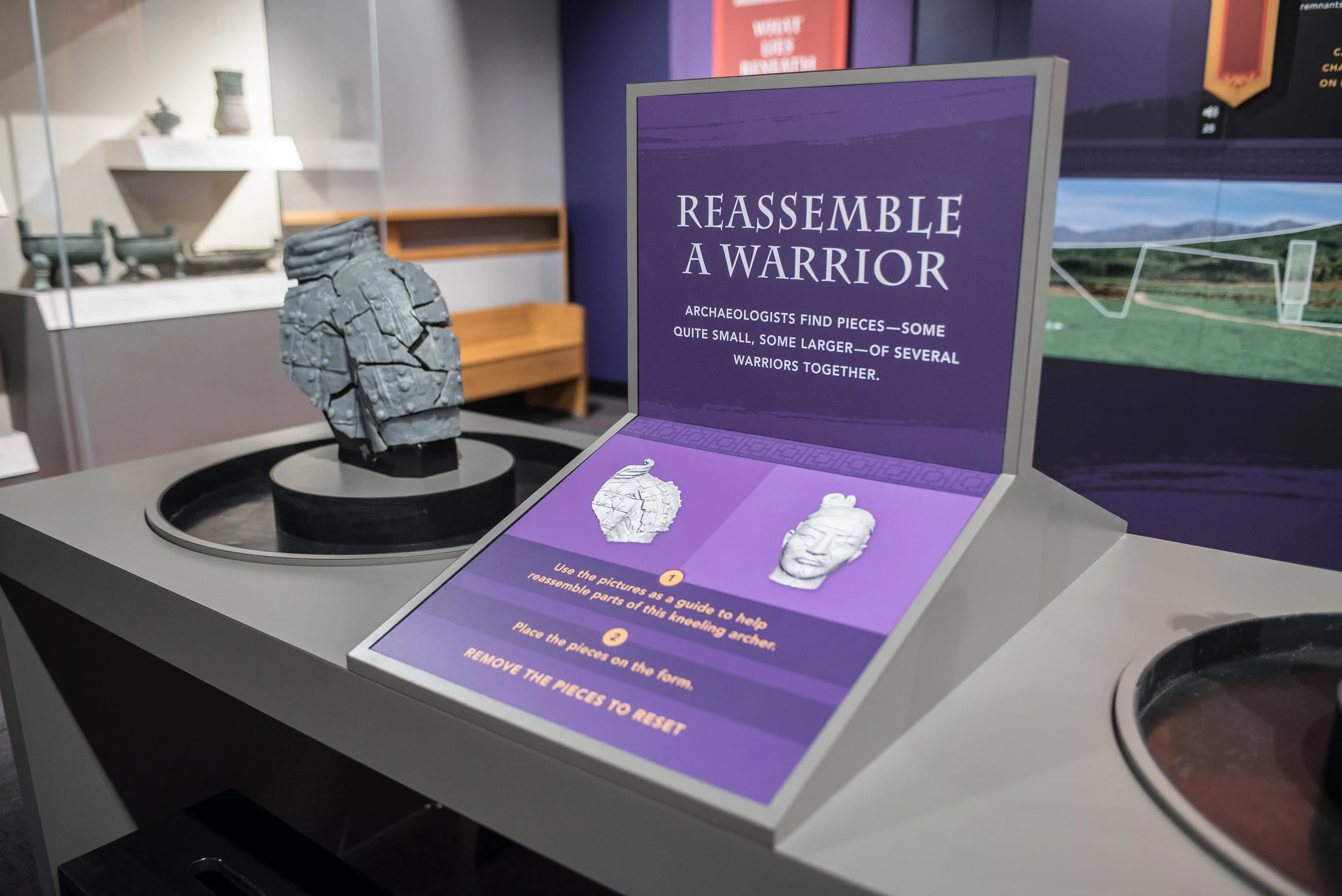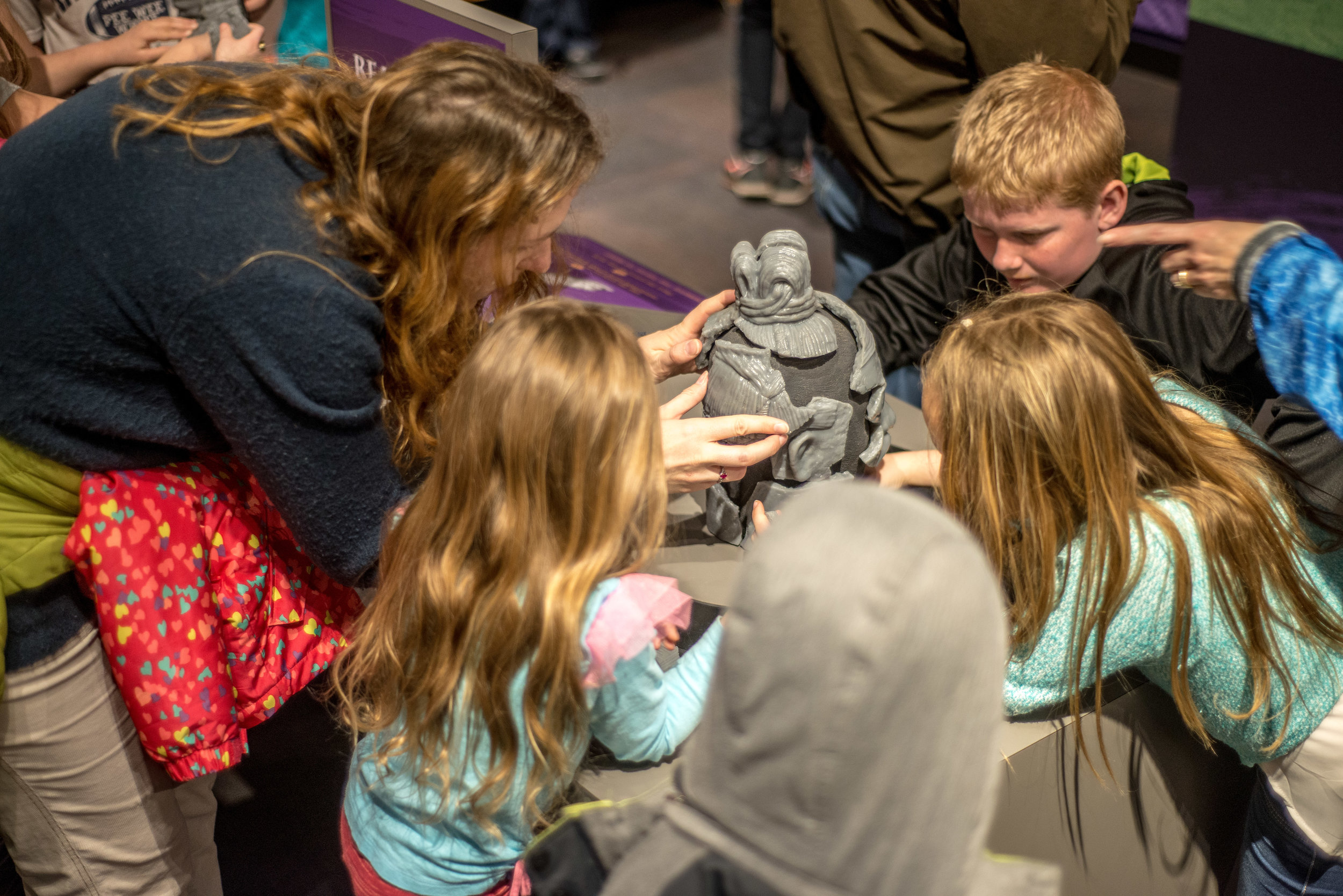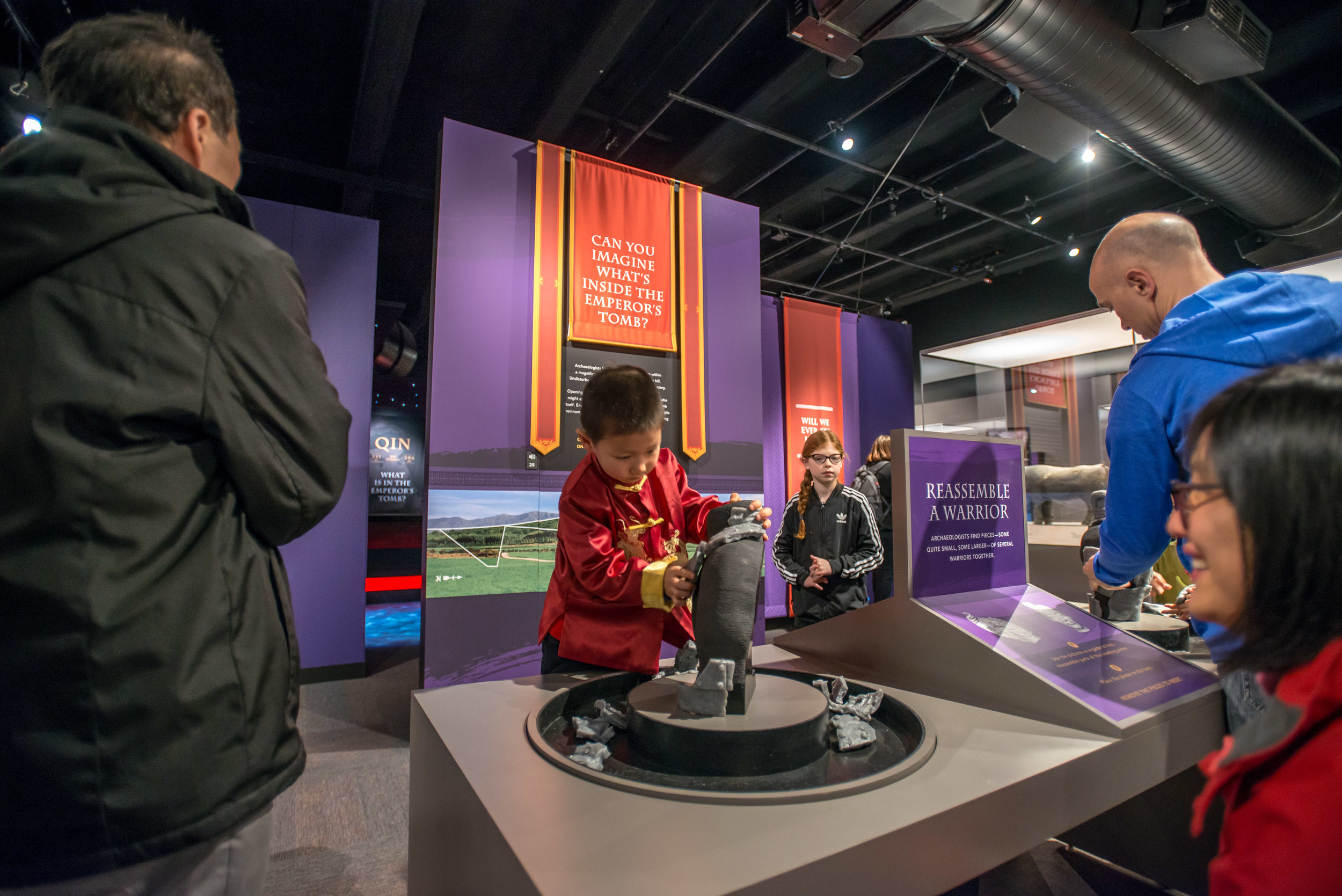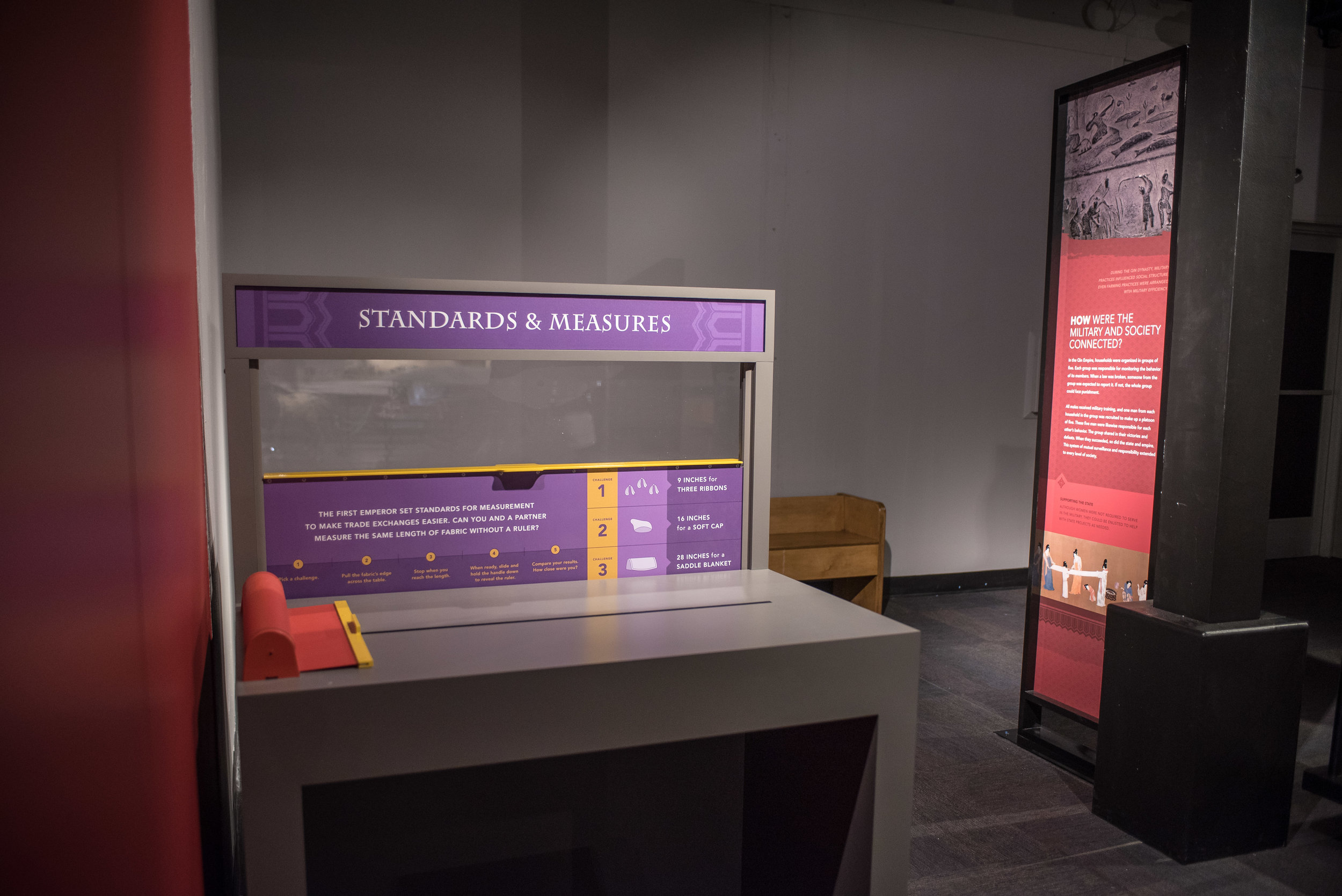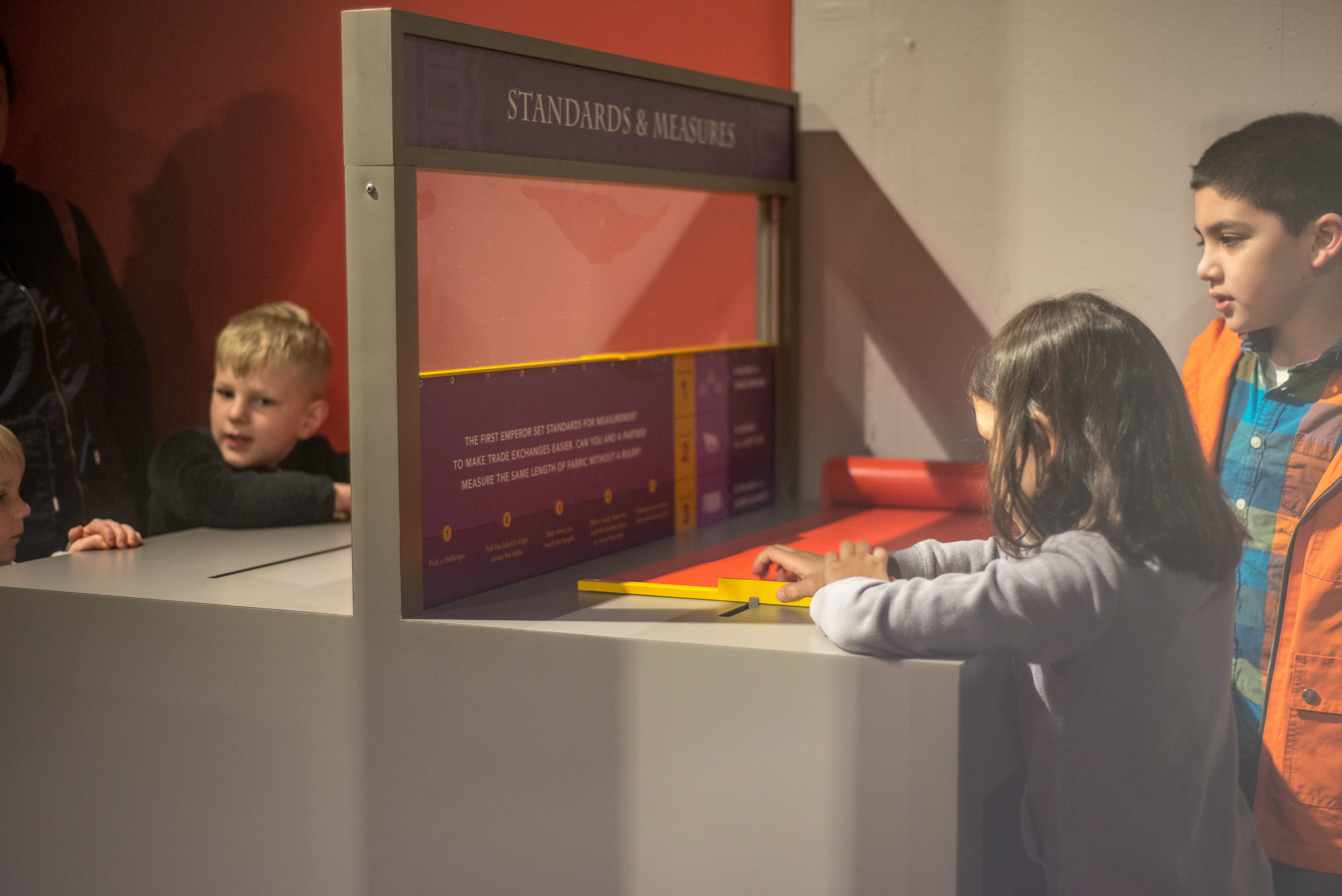Terracotta warriors of the first empire
The Franklin Institute
Installed in Seattle: April 2017 - August 2017
Installed in Philadelphia: September 2017 - April 2018
This 5000+ sq ft exhibit explores the history and science behind the terracotta warriors. Designed while a member of the exhibits team at The Franklin Institute, in collaboration with the Pacific Science Center in Seattle and Gecko Design. I was responsible for the concept, prototyping, evaluative research, and design for fabrication of all tangible interactive elements, as well as a member of the team responsible for general exhibit design and educational content. The exhibit features 10 warriors and 160+ artifacts on loan from China.
Build a warrior
This interactive lets visitors build their own terracotta warrior using parts that snap together magnetically. The archeological record shows that the warriors were produced from standard arms, legs and torsos which were crafted with reusable molds. Visitors piece together their own warrior, or replicate one of the four that we provide the parts for.
I conceptualized the experince, designed the parts and method for attachment and contracted with the talented James Krahe on the digital sculpting. I fabricated and assembled all parts user tested the instructions. I designed the table which was fabricated by a third party. All the parts were printed in high resolution on an SLA printer and snap together using polarized magnets that only let certain parts attach in the right orientation.
Mass Production
This interactive teaches about how the warriors and many other artifacts found on the site were produced using tools of mass production such as molds and stamps. Archeologists were surprised to find such evidence, it shows how advanced the X'ian empire was and how they were able to produce in such quality and quantity.
This experience refrences a specific crossbow trigger mechanism found with the warriors, produced in bronze using molds. The actual artifact is located just next to this interactive, visitors are prompted to try and recreate the shape of the three parts by manually pressing down pins. Then they are prompted to try and make the shapes using stamps provided to press into the pins, and compare how fast and accurate they were able to do it manually vs. using a tool of mass production. I conceptualized the experince, designed and prototyped the pin mechanism, and designed the table for third party fabrication.
Reassemble a warrior
This interactive lets visitors pretend to be an archeologist, reassembling artifacts from broken fragments. It is a full scale three dimensional puzzle of a head of a warrior, and a shoulder. I designed the method of production, the breakdown and difficulty of each puzzle and the magnetic three dimensional scaffold the parts attach to, while contracting again with James Krahe for the incredible digital sculpting of the pieces. I printed and assembled all parts, designed and fabricated the magnetic scaffolds and designed the table for third party fabrication.
Standards and Measures
This interactive teaches about the system of standardized measurements developed and implemented in the X'ian empire. It is the first known existence of standardized units for weight, volume and length, and was crucial in organizing a project of the size and scale of the terracotta warriors.
The experience is similar to the game battleship, two visitors sit down across from each other and are prompted to try and estimate a length of fabric, for example 18 inches to produce a saddle blanket. The visitors each pull fabric from a roll across the table to estimate the length. When they are ready they push down the cover on the window in front of them to show a ruler which confirms their estimate, and compare their estimate to their partners'. The educational goal is to show how difficult it is to estimate a length, proving the importance of a standardized system, and also to show that without a standardized system trade and commerce or large project are difficult because each party has no way to verify the quantity of what they have. I conceptualized the experience, designed and prototyped the interaction and mechanism, and designed the unit for third party fabrication.

